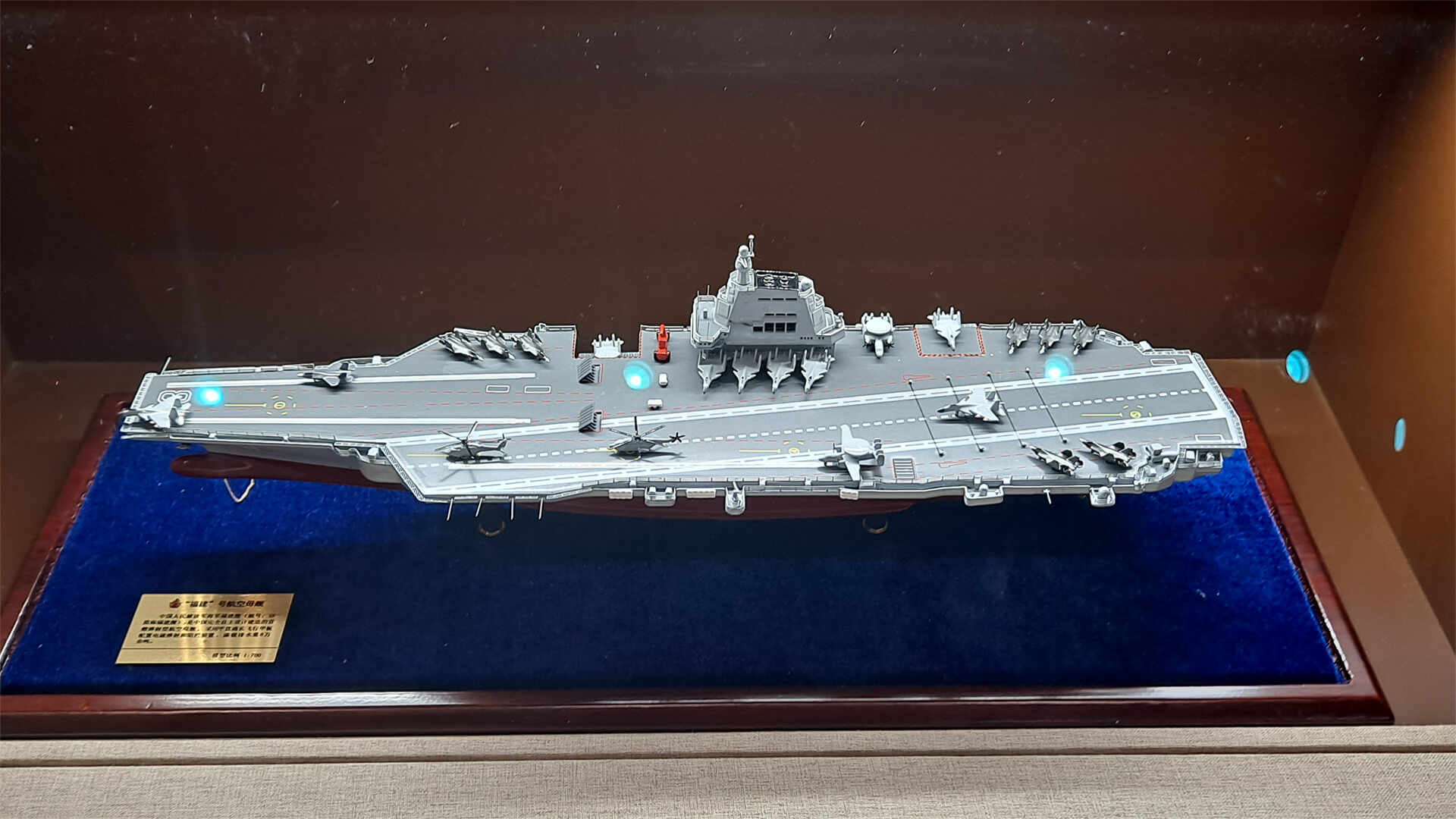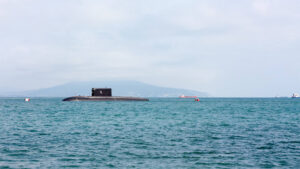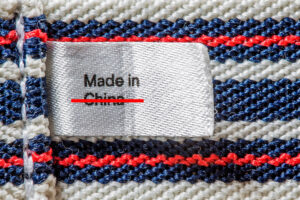The Webinar – The State of Global Energy – is only 5 days away!
Peter will deliver his analysis and forecasts for regional energy production and his assessment of geopolitical risk—everything from war, to instability and regulatory risk—with an eye on challenges and opportunities facing global production and supply.
Please join us on Friday, May 10th at 12:00 PM EST.
The newest Chinese aircraft carrier, the Fujian, has officially hit the seas. This a major development for the Chinese Navy, but still falls short when compared to with advanced counterparts (i.e. the US).
The Fujian is intended to be a test bed, meaning the Chinese will throw all of their tech onto it and see what works. Which means we’re still a ways out from seeing an actual combat vessel hit the water.
Despite all the “advancements” we’re seeing on the Fujian, the Chinese still opted out of the nuclear power option. So with a limited range and no intention of ever seeing combat, the Fujian doesn’t drastically alter my forecast for China’s naval capabilities.
Here at Zeihan On Geopolitics we select a single charity to sponsor. We have two criteria:
First, we look across the world and use our skill sets to identify where the needs are most acute. Second, we look for an institution with preexisting networks for both materials gathering and aid distribution. That way we know every cent of our donation is not simply going directly to where help is needed most, but our donations serve as a force multiplier for a system already in existence. Then we give what we can.
Today, our chosen charity is a group called Medshare, which provides emergency medical services to communities in need, with a very heavy emphasis on locations facing acute crises. Medshare operates right in the thick of it. Until future notice, every cent we earn from every book we sell in every format through every retailer is going to Medshare’s Ukraine fund.
And then there’s you.
Our newsletters and videologues are not only free, they will always be free. We also will never share your contact information with anyone. All we ask is that if you find one of our releases in any way useful, that you make a donation to Medshare. Over one third of Ukraine’s pre-war population has either been forced from their homes, kidnapped and shipped to Russia, or is trying to survive in occupied lands. This is our way to help who we can. Please, join us.
TranscripT
Hey, everybody. Peter Zeihan here, coming to you from Colorado. for those of you been watching me for a while, you know that every once in a while I do a webinar on a topic of the moment, and we’re going to be doing that again this coming Friday, May 10th, at noon eastern, which, of course, if I get the timezones right would be 11 a.m. central, 10 a.m. mountain and 9 a.m. Pacific.
That’d be about 45 minutes of going through all the crazy that we’ve seen in the energy markets going back to the end of Covid, explaining why we are where we are now and what to expect over the next 12 to 24 months. I’ll be going for about 45 minutes, and then we’ll have ample time for Q&A at the end, so you can sign up via the link that is attached to this email or this Twitter feed.
And I hope to see everyone there. Morning, everybody. Peter, I’m here coming to you from Phenix, Arizona. taking an entry from the Ask Peter series today. specifically, the Chinese have just floated their third aircraft carrier, the Fujian. And does this change my general assessment that the Chinese navy is kind of a joke? maybe a little, let’s give you the backdrop.
Okay. So the United States has been engaged in carrier aviation for over a century at this point, and we have ten ships of the Nimitz class, which are the super carriers, which are typically considered the gold standard in terms of their operational capability, their nuclear powered, the carrier of dozens of fighters and fighter bombers each and their capacity, to operate around the world is unlimited and unparalleled.
in addition, these are now the old ships. The United States is in the process of floating a new type of carrier called the Ford class, which is bigger, has more speed, has more carrying capacity and can strike faster and maintain more sorties at the same time and get them out faster. In comparison, most of the world’s other carriers are very limited.
the Brits are in the process of trying to get two super carriers very, very loosely modeled after of the American. Nimitz is in operation right now. The Japanese have converted two things that we call helicopter destroyers into medium sized carriers. And then there’s a huge drop to everybody else. So, for example, the French do have the Charles de Gaulle, which is technically a super carrier, but it has a hard time generating enough power to get up to speed to launch fighters unless the weather is absolutely perfect.
And then there’s another huge drop to everybody else, like, say, the ties with the Indians. The Chinese are kind of in the middle, well below the Japanese, well below the Brits. they have three carriers now. The first one is actually an old Soviet carrier that was built in the 80s, but it was never completed. And then it rusted in a Ukrainian port for a decade, where the Ukrainians basically stripped it for metals, and then it got towed to China and sold and eventually rechristened as the.
sorry, I can’t remember the name. it was originally the patriotic, and no one in China, who is in the military, especially who’s in the Navy, will ever consider that that vessel’s anything other than a test of China’s ability to just comprehend what carrier aviation is. It is never, never, never, never intended to see combat in any form.
The second Chinese carrier is a clone of that first one. That’s the on, and it, again, isn’t all that great. it is just a clone of an old Soviet model. And it was the Chinese attempt to see if they could take 1970s technology that did not work very well and bring it into the modern age a little bit.
Most of the parts are the same, but they have put in some things like new avionics and sensors. And again, no one in the Chinese Navy would consider it a combat vessel. It’s a test vessel. The new one that we have, the Fujian, is their first domestically designed one. and that means that it’s certainly better and uses more current technology.
But again, the Chinese navy is not talking about this thing as a combat vessel. It is a test bed. Think of it like for those of you who like the Navy stuff, think of it like the enterprise, not the USS enterprise of the United Federation plan, as in Star Trek. No to know the American carrier enterprise, which was designed as a test bed for a whole host of new technologies.
This is China’s first attempt to build something that actually floats and theoretically down the road could see combat. But this isn’t the one that would do it. This would be in theory, if everything works out perfectly, which will take them years to figure out, this would be the model that other carriers would then be built on. So yes, the Chinese have three carriers.
Yes, they are taking steps forward in their operations constructions, but they’re coming from a century behind and they still very honest with themselves here, are not claiming that any of these are combat vehicles. one more thing to keep in mind. The Fujian, the new one is a nuclear powered. So you’ve got an 80,000 ton vehicle that still has to burn fuel, which means that its range is sharply limited, and it can’t go much further than most of the rest of the Chinese navy, which is largely limited to operating within a thousand miles of the Chinese coast.
So is this significant? Sure. And if they keep up their current pace, they will be able to have a carrier that can stand up to an American carrier that’s 50 years old in the next decade or two. Not something that changes my forecast all that much.








